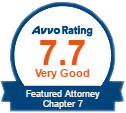Decoding the 341 Meeting of Creditors
For many people filing for bankruptcy, the “341 Meeting of Creditors” is the most intimidating part of the entire process. The name itself sounds confrontational, conjuring images of a courtroom showdown. The reality, however, is usually much less dramatic.
The 341 meeting, named after the relevant section of the U.S. Bankruptcy Code, is a mandatory hearing that takes place about 30-45 days after you file your case. It is not held in a courtroom and a judge is not present. Instead, it is conducted by the bankruptcy trustee assigned to your case.
Understanding the purpose of this meeting and knowing how to prepare can transform it from a source of anxiety into a straightforward, manageable step on your path to financial freedom. Here’s what you need to know.
What is the Purpose of the 341 Meeting?
The 341 meeting has two primary goals:
- Verification: The trustee needs to verify your identity and confirm that the information you provided in your bankruptcy petition and schedules is true and accurate. They will place you under oath and ask a series of standard questions about your assets, debts, and financial affairs.
- Creditor Inquiry: The meeting provides an opportunity for your creditors to attend and ask you questions under oath about your finances and the debt you owe them.
It’s this second point that causes the most stress, but here’s the crucial thing to understand: In the vast majority of consumer bankruptcy cases, creditors do not show up. It is simply not cost-effective for a large credit card company or hospital to send an attorney to a brief meeting for a debt that is about to be discharged. While they have the right to appear, it is a rare occurrence in a standard Chapter 7 or Chapter 13 case.
What Happens at the Meeting?
Your attorney will be by your side throughout the entire meeting.The process is typically very structured and efficient, often lasting only 2-4 minutes (most of your time will be spent waiting your turn with your phone on MUTE until your case is called). Here’s a general rundown of what to expect:
- Check-In: You will arrive at the designated location (which may be a federal building or even a virtual meeting via phone or video conference) and check in with the trustee’s clerk.
- Identification: When your case is called, you will present your government-issued photo ID (like a driver’s license) and proof of your Social Security number (like your Social Security card). This is non-negotiable; without proper ID, the meeting cannot proceed.
- The Oath: The trustee will swear you in, asking you to affirm that the testimony you are about to give is the truth.
- The Trustee’s Questions: The trustee will then ask a series of questions. While the exact questions can vary, they are generally predictable. Your attorney will have prepared you for these questions beforehand.11 Common questions include:
- “Did you review and sign your bankruptcy petition and schedules before they were filed?”
- “Is all the information contained in your documents true and correct to the best of your knowledge?”
- “Have you listed all of your assets and all of your debts?”
- “Have you transferred any property to anyone in the last two years?”
- “Do you have the right to sue anyone for any reason?”
- “Have you read the bankruptcy information sheet provided by the U.S. Trustee?”
The trustee’s job is to uncover any non-exempt assets (in a Chapter 7) or to confirm your repayment plan is feasible (in a Chapter 13). Your job is simply to answer every question honestly and directly.
How to Prepare for a Successful Meeting
Success at the 341 meeting is all about preparation and honesty.
- Review Your Paperwork: Before the meeting, sit down with your attorney and review a copy of your bankruptcy petition and schedules. You signed these documents under penalty of perjury, and you need to be familiar with what they say.
- Gather Your Documents: Ensure you have your valid photo ID and Social Security card ready to go. Do not forget them.


